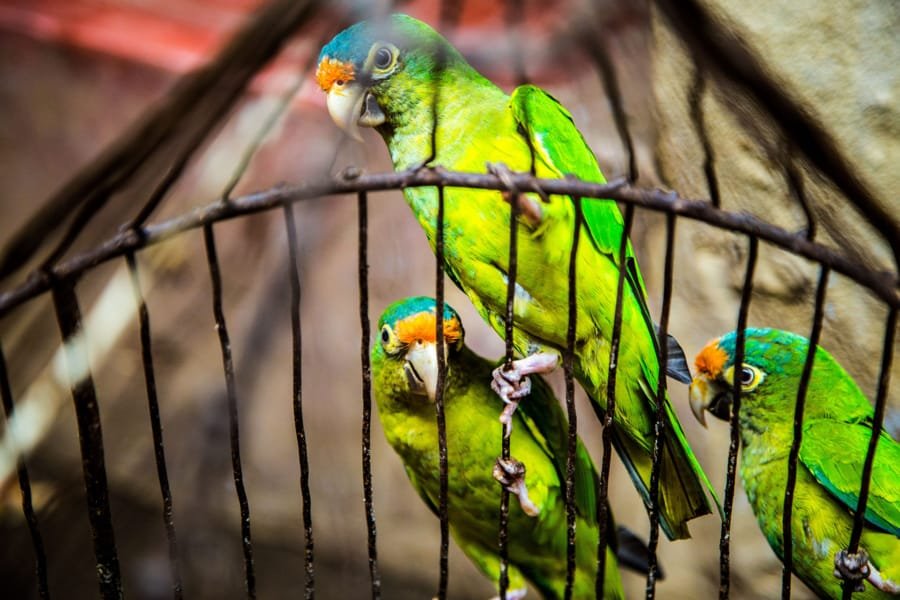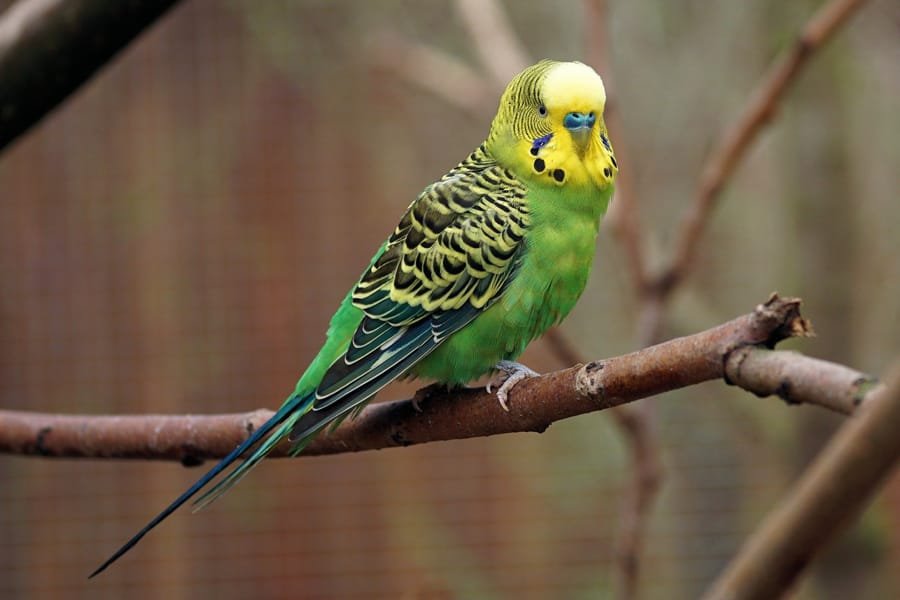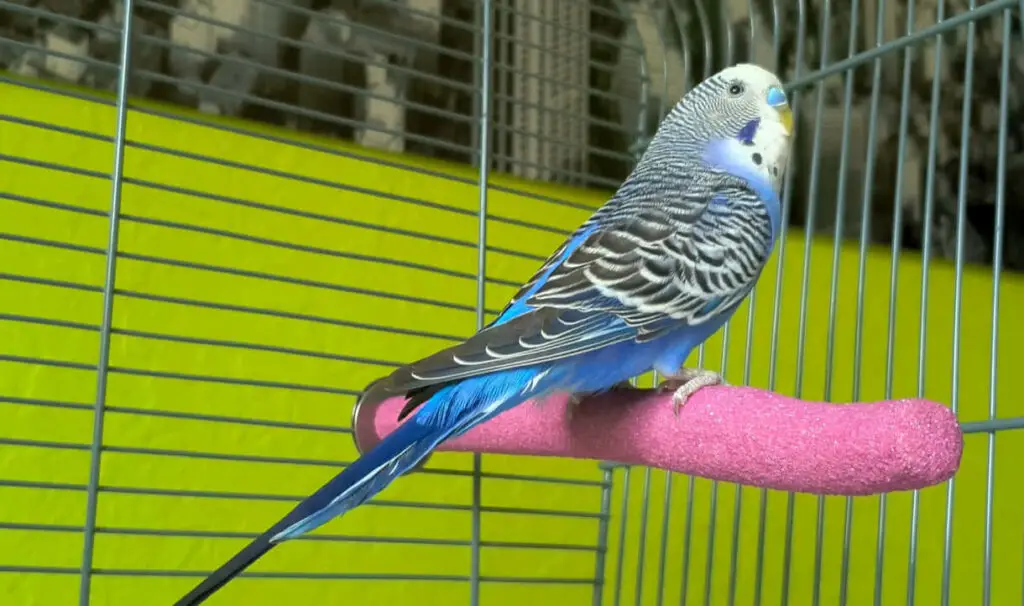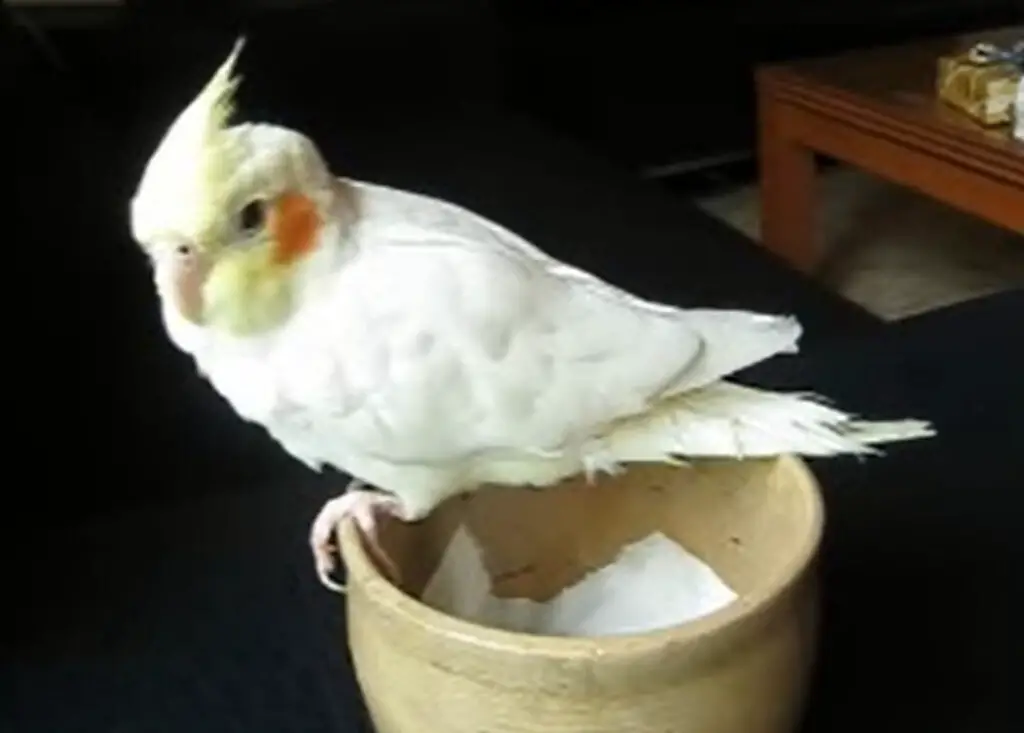Budgerigars, commonly referred to as budgies, are a delightful and popular choice for pet bird enthusiasts. With their vibrant colors, playful demeanor, and charming personalities, these tiny parrots have won the hearts of people around the world. To provide the best care for these pets, it’s crucial to understand their specific needs, including their optimal temperature range. In this article, we will delve into the budgie temperature range. And then we will explore its significance, the natural habitat’s influence, and how to create a comfortable environment to ensure their well-being and health.
Now, let us be your guiding star and walk you through the ideal budgie temperature range!

Contents
Habitat and Climate of Budgie in Nature
To truly comprehend the optimal temperature conditions for budgies, we must first journey into their origins and natural habitat. Budgerigars are native to Australia, specifically the vast arid regions of the outback. This unique environment is characterized by its harsh climate, with scorching temperatures during the day and drastic drops at night.
In the wild, budgies have evolved to adapt to these extreme temperature variations. During the day, the Australian outback can experience temperatures exceeding 100°F (37.7°C), prompting budgies to seek shelter and minimize their activity. Their lightweight bodies and respiratory systems are well-suited for conserving water and managing heat stress. As the sun sets, temperatures can plummet to as low as 50°F (10°C) or even lower, which presents another set of challenges.

Optimal Budgie Temperature Range – Keepers Should Take Note
Understanding the ideal temperature range for budgies is essential for maintaining their health and happiness. In captivity, replicating these conditions as closely as possible contributes to their overall well-being.
For daytime conditions, the optimal temperature range for budgies typically falls between 65°F and 85°F (18.3°C – 29.4°C). Within this range, budgies can comfortably engage in their usual activities, including playing, eating, and socializing. Extreme heat, exceeding 85°F (29.4°C), can lead to dehydration, stress, and even heatstroke in these small birds.
During the night, the temperature should ideally remain above 50°F (10°C) to prevent budgies from becoming too cold. Providing a consistent and moderate nighttime temperature is vital to avoiding respiratory issues and ensuring your budgies get proper rest.
How Can You Ascertain If Your Budgie is Feeling Too Hot or Too Cold?
Budgies are sensitive creatures, and sudden temperature fluctuations can have adverse effects on their health. Here are the indications to watch out for when your budgie is feeling too hot or too cold:
When your budgie feels too hot
- Excessive Panting: Budgies do not sweat like humans, so they regulate their body temperature through panting. If you notice your budgie panting rapidly with its beak open, it’s a clear indication that it’s trying to cool down.
- Wings Spread Apart: When budgies are feeling too hot, they may spread their wings away from their body. This behavior helps them dissipate excess body heat.
- Lethargy: Overheated budgies might become lethargic and less active than usual. They may spend more time sitting quietly and avoiding their usual playful behaviors.
- Loss of Appetite: High temperatures can lead to loss of appetite. If your budgie is not showing interest in its food, it could be due to discomfort caused by heat.
- Sitting at the Bottom of the Cage: If your budgie is spending an unusual amount of time sitting on the cage floor, it might be trying to get closer to a cooler surface. This behavior is a clear sign of distress.
- Fluffing Up Feathers: While budgies fluff up their feathers to keep warm, excessive fluffing can be an attempt to create a barrier between their bodies and the heat.

When your budgie feels too cold
- Constant Shivering: Shivering is a common sign of a budgie being too cold. If you observe your budgie trembling, it’s a clear indication that it’s trying to generate warmth.
- Huddled Position: Budgies will huddle together when they’re feeling too cold. If you see your budgie pressing itself against the cage bars or other budgies, it’s trying to conserve body heat.
- Reduced Activity: Cold temperatures can lead to reduced activity levels. Your budgie might become less energetic and spend more time perched quietly.
- Puffed Appearance: Budgies fluff up their feathers to trap warm air close to their bodies. If your budgie appears excessively puffed up, it’s trying to insulate itself against the cold.
- Cold Feet: Check your budgie’s feet. If they feel cold to the touch, it’s a clear sign that the bird’s body temperature is dropping.
- Loss of Appetite: Cold temperatures can also lead to a loss of appetite. If your budgie is not eating as usual, it might be due to discomfort from the cold.
It’s important to observe these indications, you should take immediate action to address the situation. You also need to move your budgie to a more suitable location like adjusting the cage’s position, providing appropriate heating or cooling methods, and ensuring access to fresh water. If the situation persists or worsens, it’s advisable to consult an avian veterinarian for professional guidance.
Creating a Comfortable Environment
Maintaining an optimal temperature range for your pet budgies requires careful consideration and planning. Here are some practical steps to help you create a comfortable environment for your feathered friends:
- Cage Placement: Choose a location for the budgie cage that minimizes exposure to direct sunlight and drafts. Avoid placing the cage near windows that might amplify the effects of external temperature fluctuations.
- Insulation: Proper insulation can help regulate the temperature inside the cage. If you live in an area with extreme temperature variations, consider using a cage cover or placing the cage in an area of your home that remains relatively stable in terms of temperature.
- Heating and Cooling: Depending on the climate in your region, you may need to employ heating or cooling methods to maintain the optimal temperature range. During colder months, a small ceramic heat emitter or a heated perch can provide the necessary warmth. In warmer months, ensure proper ventilation and consider using fans to prevent overheating.
- Monitoring Behavior: Pay close attention to your budgies’ behavior. Signs of discomfort due to temperature fluctuations might include excessive panting, lethargy, or prolonged periods of huddling. If you observe these signs, take immediate action to adjust the temperature conditions accordingly.
- Hydration: Regardless of the temperature, access to clean and fresh water is crucial for budgies. High temperatures can lead to dehydration, so make sure your budgies always have access to water.
Conclusion
Caring for budgies goes beyond providing food and a cage; it extends to creating an environment that mirrors their natural habitat. Understanding the budgie temperature range and its implications is an essential aspect of responsible pet ownership. By respecting the optimal temperature range and making necessary adjustments, you can ensure the well-being and longevity of your feathered companions.
Remember that budgies have adapted over generations to thrive in the challenging climate of the Australian outback. By striving to replicate these conditions as closely as possible, you can offer your budgies a comfortable and enriching life. From cage placement to monitoring behavior, every action you take contributes to the health and happiness of your beloved pet budgies. As you embark on this journey of care and companionship, you’ll discover the immense joy that comes from nurturing these delightful creatures in an environment that truly supports their needs.







